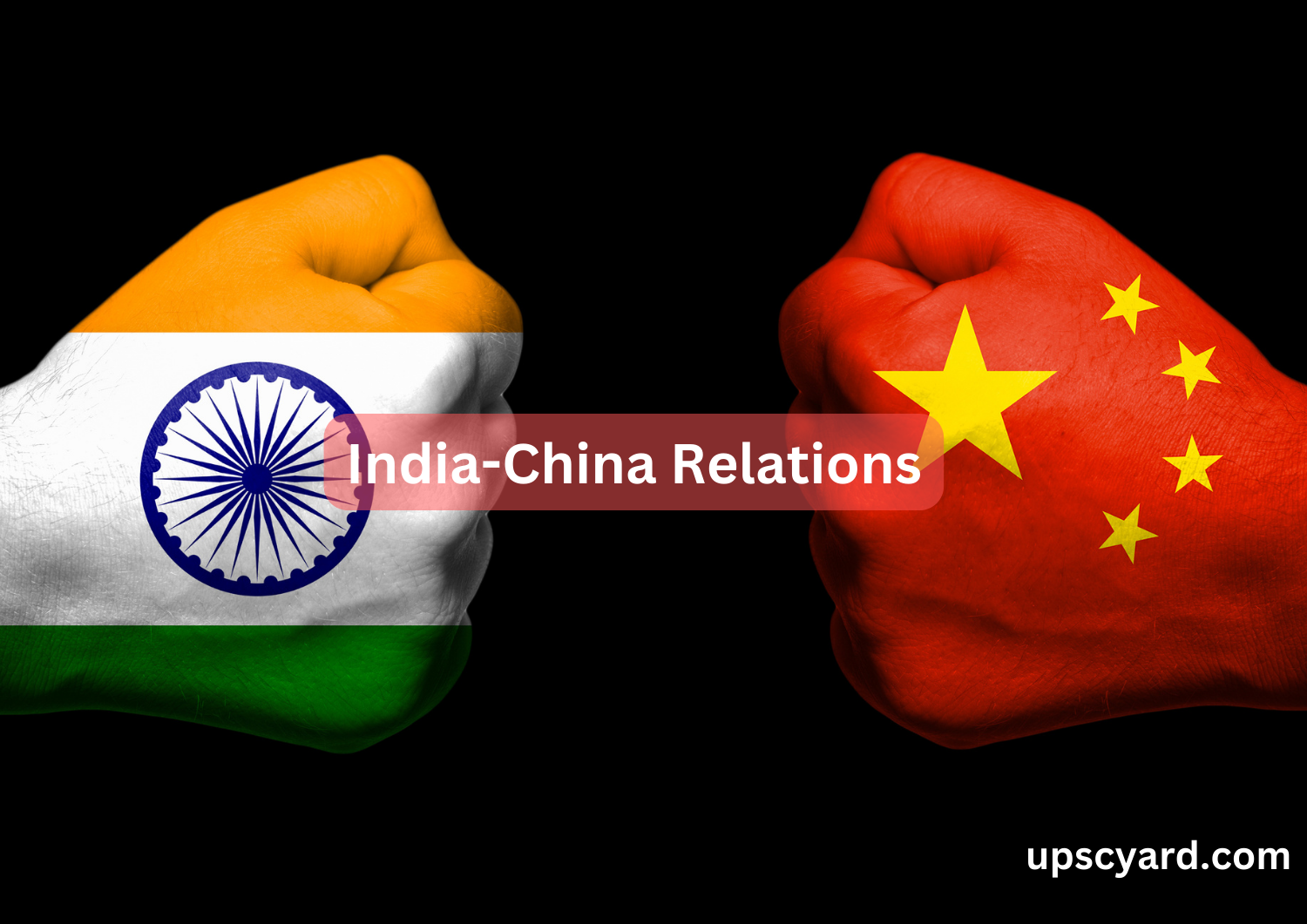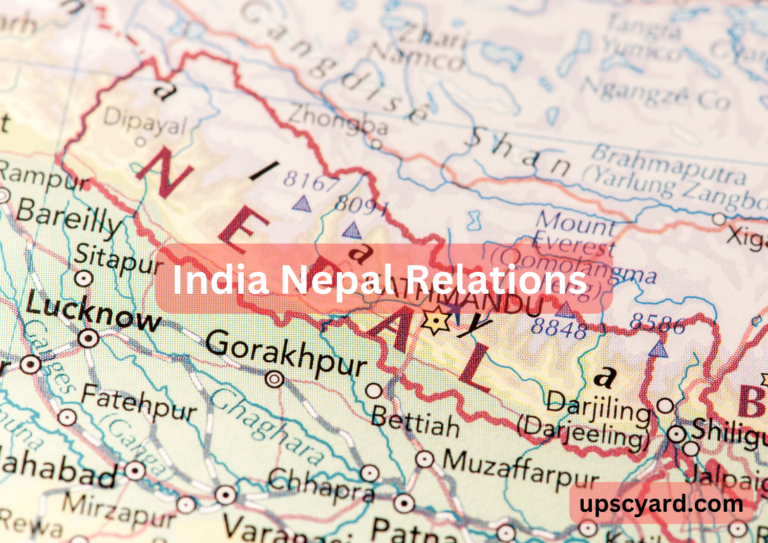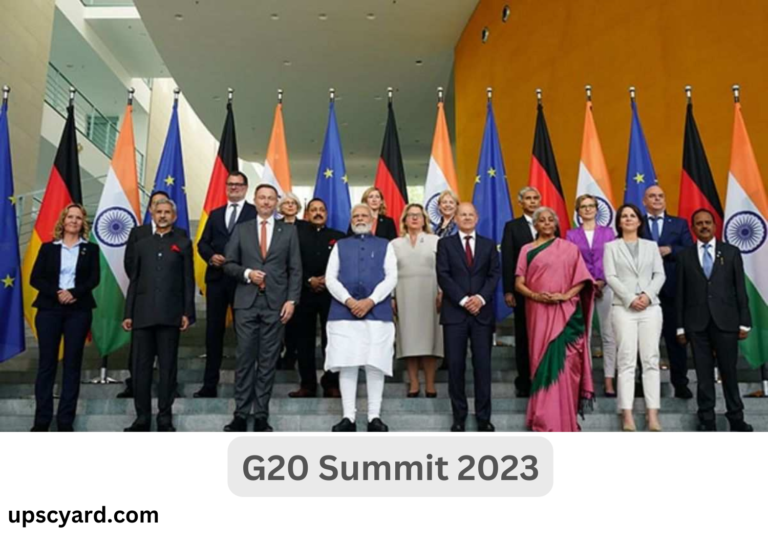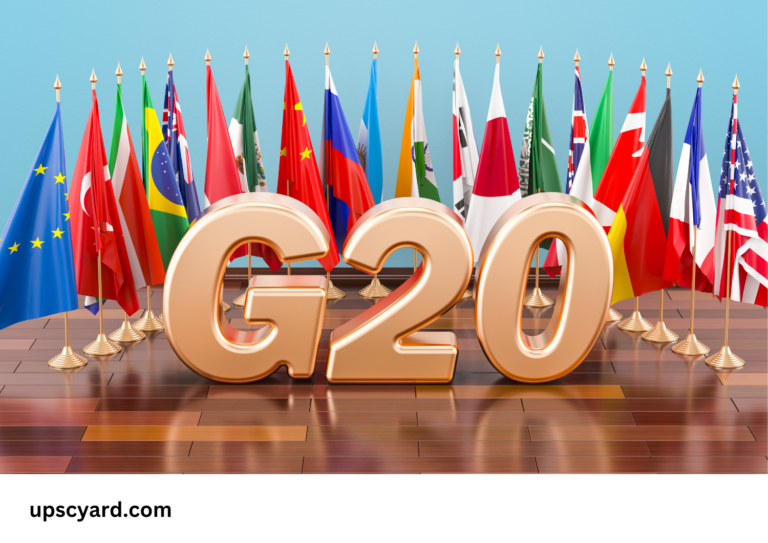India-China relations can be aptly characterized as the intricate bond between two time-honoured civilizations now emerging as formidable global powers. These nations have forged a robust and harmonious connection firmly rooted in a historical legacy and a convergence of interests.
Moreover, in the contemporary context, India and China are dynamic economic giants, offering each other immense opportunities for mutual benefit. This synergy extends to various aspects, including trade, technology, and global diplomacy, underlining the potential for a bright and prosperous future in their bilateral relationship.
India-China Relations‘s Document
A Government Official Document by Indian Ministry of External Affairs
Recent Developments in India-China Relations
In the ever-evolving landscape of India-China relations, several notable developments have taken place in recent months, reflecting a complex mix of dialogue and challenges:
- February 2023 – Resumption of Talks:
- In February 2023, the foreign ministers of India and China convened on the sidelines of the G20 meeting in Bali, Indonesia. During this meeting, both nations committed to resuming talks concerning the longstanding border issue. Their shared objective was to make concerted efforts to enhance bilateral relations, signalling a desire for constructive engagement.
- March 2023 – Troop Disengagement:
- In March 2023, the defence ministers of India and China convened on the margins of the Shanghai Cooperation Organization (SCO) meeting in Dushanbe, Tajikistan. During this significant meeting, both sides reached a crucial agreement to disengage their troops from specific areas along the Line of Actual Control (LAC). This move aimed to reduce tensions and promote stability in the border region.
- April 2023 – Ongoing Military Talks:
- In April 2023, India and China continued their diplomatic efforts with the 15th round of military commander-level talks. The primary focus of these discussions revolved around the disengagement of troops from the remaining areas along the LAC. However, the talks yielded no substantial breakthrough, underscoring the persistent complexities in the border dispute.
- May 2023 – Diplomatic Engagement:
- Indian Prime Minister Narendra Modi and Chinese President Xi Jinping held a virtual meeting in May 2023, coinciding with the BRICS summit. The two leaders reiterated their commitment to fostering open channels of dialogue and communication. This diplomatic engagement demonstrated a shared willingness to navigate the challenges and work towards improving bilateral relations.
HISTORY OF INDIA-CHINA RELATIONS
The historical ties between India and China are often likened to that of intertwined twins, their connection running deep through the annals of time.
In ancient epochs, both nations emerged as storied civilizations, and the formidable Himalayan mountains, far from being a barrier, paradoxically facilitated their exchanges. India was a wellspring of profound cultural values, exporting Buddhism and other significant elements while importing coveted Chinese treasures like porcelain and silk. This cultural and economic interplay was not limited to a few sporadic exchanges; Indian kingdoms, such as the Mauryan and Gupta dynasties, maintained consistent contact with China, sustaining a thriving trade partnership.
Chinese travellers, most notably the venerable Fa Hien and Xuanzang (Tsuen Tsang), undertook remarkable journeys to India, extensively documenting their experiences and observations. Their writings, which included vivid descriptions of Nalanda University in Bihar, serve as invaluable historical records, shedding light on the rich tapestry of Indian society and culture.
As history flowed into the medieval era, maritime routes assumed greater significance, ensuring ongoing contact between the two civilizations. A notable moment in this historical narrative was when Kollatunga, a Chola dynasty ruler from southern India, made history by dispatching the first Indian envoy to the Chinese court. This diplomatic mission included not only an envoy but also a contingent of 70 trade representatives, underscoring the enduring relationship between these two ancient cultures.
In a curious twist of fate, India and China found themselves as colonial counterparts, both succumbing to the colonial ambitions of various European powers. This ushered in a period of economic and cultural exploitation as they were subjugated. The English East India Company, under the aegis of the Charter Act of 1813, retained a stranglehold on trade with China, perpetuating a colonial legacy that shaped their shared history in unexpected ways.
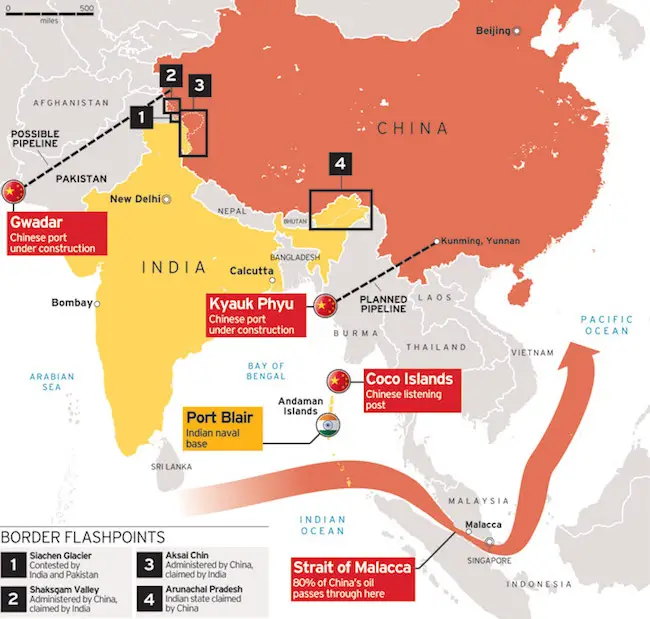
CULTURAL RELATIONS
The rich tapestry of cultural ties between India and China unravels over centuries, with traces of conceptual and linguistic exchanges dating as far back as 1500-1000 B.C. These interactions are a testament to the enduring connections between the Shang-Zhou civilization and the ancient Vedic civilization.
An indelible mark of this historical civilizational link is the construction of a Buddhist temple by India in Luoyang, Henan Province, showcasing the spiritual bonds that have transcended time and geography.
During the 1960s and 1970s, Indian Bollywood movies found a fervent fan base in China, and this cinematic connection has experienced a revival in recent times. India and China have ventured into an agreement for co-producing movies, the first of which, based on the life of the revered monk Xuan Zang, graced theatres in 2016. This collaborative cinematic endeavour not only entertains but also deepens the cultural understanding between the two nations.
Yoga, a cherished gift from India to the world, is experiencing a surge in popularity in China. China’s role as a co-sponsor of the U.N. resolution designating June 21 as the International Day of Yoga further underscores the cultural synergy between these ancient civilizations. This global celebration of yoga brings people from all walks of life together to embrace the physical, mental, and spiritual benefits of this ancient practice, fostering a shared sense of well-being and mindfulness.
ECONOMIC RELATIONS
The economic dynamics between India and China have experienced a remarkable upswing in recent years, fostering a robust partnership. The transformation is evident in the statistics: in 2008, bilateral trade surged to a substantial US$ 51.8 billion, a development that saw China surpass the United States as India’s primary “Goods trading partner.” This trajectory continued to soar, reaching an unprecedented high of approximately USD 81.86 billion.
The economic interplay between the two nations is still possible; it is carefully nurtured through various dialogue mechanisms. These mechanisms facilitate a deeper understanding of economic cooperation and its broader implications. Among these mechanisms, we find the Joint Economic Group, the Strategic Economic Dialogues, the Development Research Center Dialogue, and the Financial Dialogue, all instrumental in shaping India-China economic and commercial relations.
Furthermore, a web of institutionalized dialogue mechanisms strengthens the economic connection. Various Joint Working Groups (JWG) dedicated to Trade, Agriculture, and Cooperation in Energy, among other sectors, foster regular exchanges and collaborations. These dialogues serve as conduits for forging innovative economic partnerships and making significant strides in trade, investment, and technology sharing, thereby fortifying the financial bond between these two major global players.
DEFENCE AND STRATEGIC COOPERATION
The defence and strategic cooperation between India and China has witnessed significant developments, reshaping their bilateral ties in recent years.
In 2008, a pivotal agreement was inked to expand military cooperation, setting in motion a series of collaborative endeavours. The armed forces of both nations have since engaged in joint exercises, undertaken port calls, and established mechanisms for addressing border incursions. Notably, they come together annually to conduct a joint anti-terrorism training named ‘HAND IN HAND.’ This not only enhances their defence capabilities but also promotes mutual understanding and trust.
In the fight against terrorism, India and China have united their efforts within the Regional Anti-Terrorism Structure (RATS) under the auspices of the Shanghai Cooperation Organization. This joint commitment underscores their shared determination to combat the global menace of terrorism and strengthen regional security.
Furthermore, both countries have ventured into collaborative projects in Afghanistan, a testament to their regional engagement. As part of this initiative, they have jointly trained Afghan diplomats, reflecting their commitment to fostering stability and peace in a critical region. This strategic cooperation was initially agreed upon during the First Informal Summit between the leaders of India and China in April in Wuhan. This not only bolsters their regional influence but also contributes to the broader cause of global security and stability.
SCIENTIFIC COOPERATION
The scientific cooperation between India and China has evolved into a thriving partnership underpinned by many collaborative agreements across diverse fields.
To date, nearly 24 agreements have been inked, encompassing a wide array of scientific domains. These include agricultural research, bio-technology, pharmaceuticals, outer space research, nuclear energy, and electronics, among others. These agreements reflect the depth and breadth of their scientific collaboration, aiming to harness the collective expertise of both nations for mutual advancement.
To ensure the effective execution of these agreements, an India-China Joint Scientific group has been established. This group regularly convenes to assess the progress of ongoing scientific endeavours and chart the course for future collaboration. Furthermore, delegation-level visits between the two nations have facilitated the exchange of ideas and knowledge, fostering innovation and progress in the scientific community.
It’s worth noting that both nations have also solidified their scientific cooperation through a civil nuclear agreement, further expanding the horizons of their collaboration.
On the technological front, the engagement is palpable. Chinese telecom giant Huawei is actively participating in the 5G technology trials in India, a testament to the collaborative spirit that extends beyond scientific research and into cutting-edge technology. This endeavour not only showcases the potential for mutual technological growth but also strengthens the bonds of scientific exchange between India and China.
India-China Relations in EDUCATION
India and China have forged a robust educational partnership, with initiatives that span several domains and have strengthened their academic ties in recent years.
In 2006, a significant milestone was reached when both nations signed the Education Exchange Programme (EEP). This comprehensive agreement serves as an umbrella for educational cooperation between India and China, encapsulating a broad spectrum of collaborative endeavours in education.
A notable facet of this exchange is the annual scholarship program that enables Chinese students to study Hindi at the Kendriya Hindi Sansthan in Agra. This initiative not only fosters linguistic and cultural understanding but also creates enduring bonds between individuals from both countries.
The collaboration in the education sector has yielded tangible results, notably an upsurge in the number of Indian students pursuing education in China. During the academic year 2019-20, more than 20,000 Indian students were enrolled in various Chinese universities, spanning many disciplines. This not only provides Indian students with access to world-class education but also enriches the cultural fabric of both nations through the diversity of experiences and perspectives these scholars bring.
INDIAN COMMUNITY
The Indian community in China is on a steady rise, reflecting the growing bonds between the two nations. Current estimates indicate that the Indian community in China stands at approximately 35,500 individuals, signifying a significant presence.
A substantial proportion of this community is composed of Indian students, exceeding 20,000 in number. These students seek education and cultural enrichment in Chinese institutions, contributing to the vibrant tapestry of international scholars in the country.
Furthermore, a notable contingent of Indians and Persons of Indian Origin (PIOs) have established themselves as professionals, finding opportunities with various multinational corporations and Indian companies in China. This economic integration not only adds to the diversity of the Chinese workforce but also plays a pivotal role in bolstering economic and cultural ties between the two nations. As the Indian community continues flourishing in China, it is a living testament to the enduring friendship and cooperation between these two great nations.
SIGNIFICANCE OF INDIA-CHINA RELATIONSHIP
The relationship between India and China holds multifaceted significance in the global arena, underpinned by several critical factors that extend beyond their bilateral ties.
- Balancing Western Influence: The rise of China in the international sphere has brought about a significant rebalancing of power between the West and the non-Western world. The United States, mainly, has increasingly focused on China, scrutinizing its trade practices, technology policies, and intellectual property rights. In this context, India and China must avoid falling into the trap of being pitted against each other. Their strategic cooperation can ensure that they maintain their autonomy and influence on the global stage.
- Economic Partnership: China has emerged as India’s largest trading partner, underlining the economic interdependence between these two Asian giants. This economic synergy is vital for both nations to strengthen their positions and collectively strive for global preeminence. Collaborative financial endeavours have the potential to unlock unprecedented growth and prosperity for both countries.
- China’s Role as a P5 Nation: India recognizes China’s standing as one of the P5, the world’s most influential nations within the United Nations Security Council. This acknowledgement highlights the complex dynamics at play in their relationship. There have been instances, such as the stance on issues like China’s Belt and Road Initiative (BRI) and the addition of Masood Azhar to a UN terrorism-based sanctions list, where both nations have negotiated their positions as global powers.
- The Afghanistan Factor: Collaborative efforts in Afghanistan could serve as a blueprint for cooperation in other parts of their shared neighbourhood. By working together in Afghanistan, India and China demonstrate that despite differences and historical complexities, they can cooperate to promote regional stability and prosperity. This cooperation model can be extended to address various challenges in their broader geographical sphere.
The India-China relationship is not confined to their bilateral interactions alone; it holds the potential to shape global dynamics and foster regional stability. A harmonious and cooperative partnership between these two influential nations can have far-reaching implications on the world stage, maintaining a balance of power and advancing shared interests.
CHALLENGES IN SINO-INDIAN RELATIONSHIP
The relationship between India and China is marked by a complex interplay of challenges that have the potential to impact not only bilateral interactions but also regional dynamics and global affairs. Here are some of the key issues:
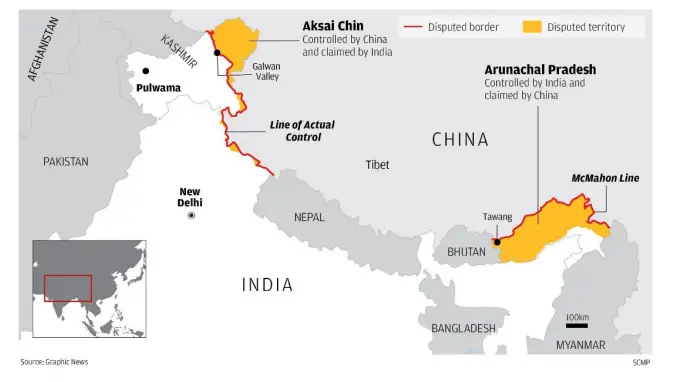
- Border Dispute:
- Aksai Chin & Arunachal Pradesh: Both nations claim Aksai Chin and Arunachal Pradesh. While China administers Aksai Chin, India has territorial control over Arunachal Pradesh, leading to a longstanding and unresolved border dispute.
- Dalai Lama Successor Issue:
- The prominence of Tawang in the border dispute may become particularly significant should the Dalai Lama pass away. This could lead to a succession crisis between a Beijing-appointed successor and a legitimate successor outside Tibet, creating tensions in the relationship.
- Trade Imbalance:
- India faces a substantial trade deficit with China, amounting to USD 48.66 billion. This imbalance is a matter of concern, as India imports significantly more from China than it exports.
- One Belt, One Road Initiative:
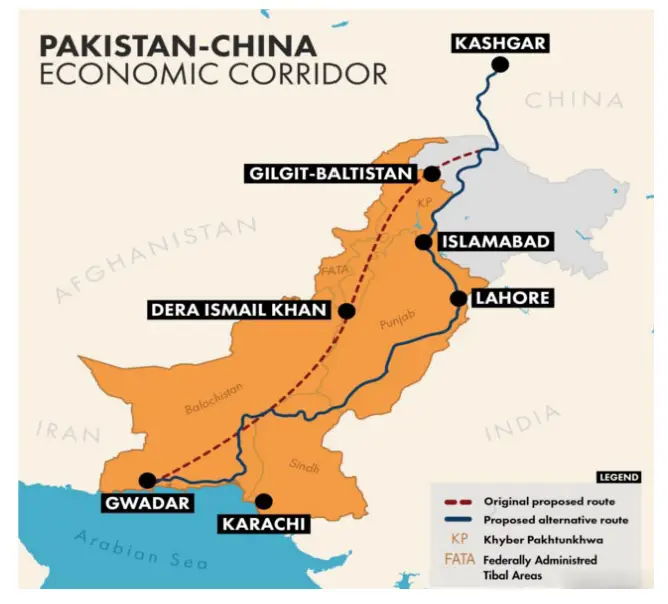
- India’s refusal to participate in China’s ambitious One Belt, One Road initiative, particularly its investment in the China-Pakistan Economic Corridor (CPEC), which passes through disputed territory in Pakistan-occupied Kashmir, has been a point of contention.
- South China Sea (SCS) Issue and India:
- India’s efforts to expand its influence through its Look East Policy (LEP) have not been well-received by China, particularly its strategic moves in the South China Sea.
- Domination of Indian Ocean:
- China’s expansive Belt and Road Initiative (BRI) include several corridors that pass through India’s South Asian neighbourhood. India views this as an attempt to assert dominance in the Indian Ocean region.
- China’s Reluctance to Support India’s International Membership:
- China has consistently blocked India’s attempts to join various international bodies, including the Nuclear Suppliers Group (NSG) and the United Nations Security Council (UNSC), hindering India’s global aspirations.
- String of Pearls:
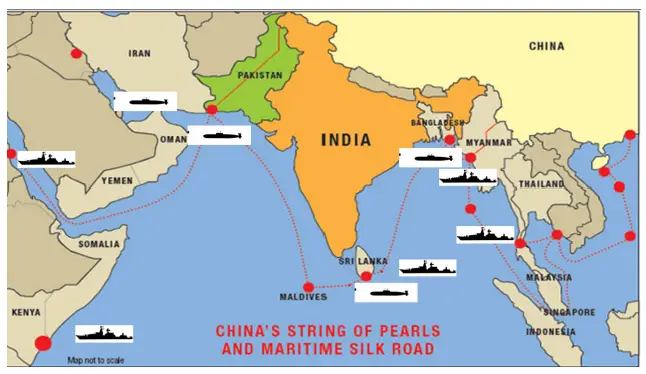
- China’s initiatives to establish strategic relationships with India’s neighbouring countries, ostensibly for development and trade, have raised concerns of potential encirclement and diplomatic pressure on India.
- Use of Veto Power Against India:
- China has wielded its veto power to thwart India’s efforts to target Pakistan and Pakistan’s state-sponsored terrorism at the UNSC and the Financial Action Task Force (FATF).
- Economic Interdependence:
- A considerable portion of India’s imports, including pharmaceuticals, chemicals, automotive components, consumer electronics, and more, is sourced from China. Chinese companies have also invested significantly in Indian start-ups and industries, embedding themselves in India’s socio-economic and technological ecosystem.
- Boycott of Chinese Goods:
- While there is a growing sentiment to boycott Chinese goods in India, the impact on China remains limited, as India’s imports from China account for only 2% of China’s total exports. Moreover, key sectors like India’s drug intermediary needs and electronics heavily depend on Chinese imports.
These challenges reflect the complexity of the Sino-Indian relationship and underscore the need for nuanced diplomacy and cooperation to address these issues and foster a more stable and constructive partnership.
Challenges in Achieving Self-Reliance (Atmanirbhar) Through Boycotting Chinese Goods
The concept of achieving self-reliance, or “Atmanirbhar,” is a noble aspiration for any nation. However, in India’s case, this endeavour is beset with challenges due to the deep-rooted economic ties and dependencies between India and China.
- Trade Partnership:
- China holds the position of being India’s second-largest trading partner, following only the United States. This robust trading relationship encompasses many sectors, including chemicals, automotive components, consumer electronics, and pharmaceuticals. Any sudden and extensive boycott of Chinese goods could disrupt supply chains and affect various industries.
- Import Dependency:
- China contributes nearly 12% of India’s imports across several crucial sectors. This includes providing vital components for India’s manufacturing and technology sectors. Conversely, only 0.9% of Chinese imports come from India, underscoring the trade imbalance.
- Pharmaceutical Reliance:
- A staggering 70% of India’s drug intermediary needs are met through imports from China. This heavy reliance on China for pharmaceutical ingredients poses significant challenges to the Indian healthcare industry’s self-sufficiency.
- Affordable Electronics:
- Chinese products, particularly smartphones and electronics, have flooded the Indian market, offering affordability and accessibility. These products have become integral to the daily lives of millions of Indians.
- Investment in Indian Start-Ups:
- Companies like Alibaba and Tencent have strategically invested billions of dollars in Indian start-ups, diversifying India’s technology ecosystem. These investments not only bolster the Indian start-up ecosystem but also strengthen economic interdependence.
- Domination of Markets:
- Chinese goods dominate a significant portion of Indian markets. Approximately 90% of the toy market and 50% of the bicycle market are controlled by Chinese products.
- Limited Impact on China:
- Despite India’s significant imports from China, its contribution to China’s total exports is merely 2%. Even if Indians were to boycott all Chinese imports, the impact on China would be relatively minor in the broader context of its global trade.
While pursuing self-reliance is an admirable goal, India must carefully navigate the intricacies of its economic interdependence with China. Sudden and extensive boycotts may disrupt sectors critical to India’s development and well-being. A more strategic and gradual approach to reducing dependence on Chinese goods may be necessary to achieve self-reliance without causing economic upheaval. Balancing economic growth with the quest for self-reliance will be a complex endeavour for India in the future.
WAY FORWARD for India-China Relations
As India and China navigate the complexities of their relationship, several strategies and avenues can pave the way for a more stable and constructive future.
- Adapting to China’s Rise as a Superpower:
- India faces the challenge of maintaining a stable relationship with China, a nation poised to become the next superpower. Diplomacy, cooperation, and constructive engagement will be pivotal.
- Assisting Weaker States:
- Building on the ‘India-China plus one’ framework outlined in the Wuhan talks, both nations can collaborate to support weaker states. Initiatives such as training Afghan diplomats represent initial steps towards trilateral cooperation involving India, China, and Afghanistan.
- Coordinating Geoeconomic Plans:
- India’s development efforts in South Asia require the strategic engagement of key players, including China. Coordination with China in addressing regional underdevelopment and fostering interdependence is essential.
- Maritime Cooperation:
- Recognizing China’s ‘Malacca dilemma’ and its interest in securing trade routes in the northern Indian Ocean, both countries can dialogue to address mutual concerns, such as China’s port projects.
- Competitive Co-Existence in a Common Neighborhood:
- Smaller South Asian countries still perceive India as the dominant regional power. India and China should acknowledge this reality and work on collaborative initiatives that complement rather than challenge each other’s roles.
- Infrastructure Development:
- With China’s plans for a permanent military base in Pakistan for the China-Pakistan Economic Corridor (CPEC), India should prepare for a more prominent Chinese role in the region. Strengthening its infrastructure and connectivity is imperative for India.
- India-Japan Cooperation:
- India can collaborate with countries like Japan and engage with multilateral institutions to foster regional connectivity within the Indian subcontinent and beyond. Such partnerships can be instrumental in shaping the geopolitical landscape.
In navigating the future of their relationship, both India and China should master the four keys of leadership: transmission, shaping, and integration. These keys entail reaching consensus at the leadership level, transmitting that consensus effectively throughout the system, actively shaping bilateral relations, and fostering exchanges and cooperation to achieve joint development. A shared vision of regional peace and development is a win-win situation for both leading nations, promoting stability and prosperity in the region.

